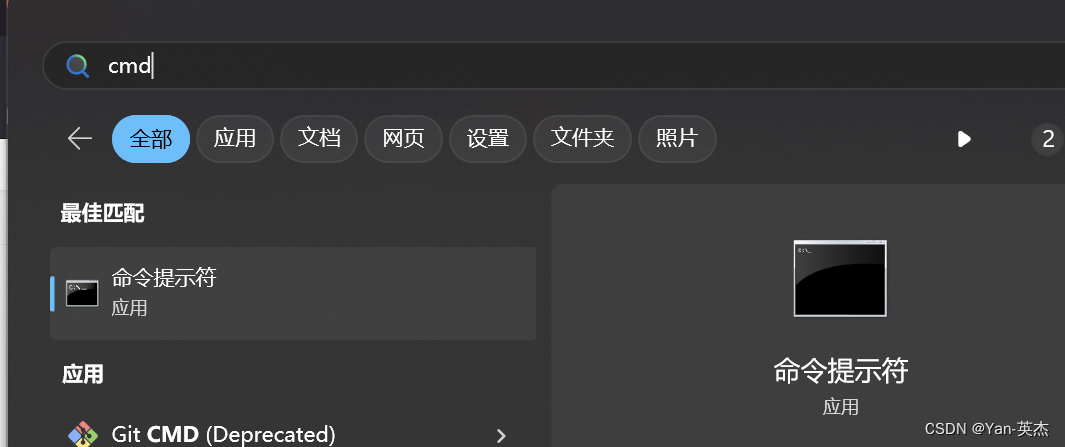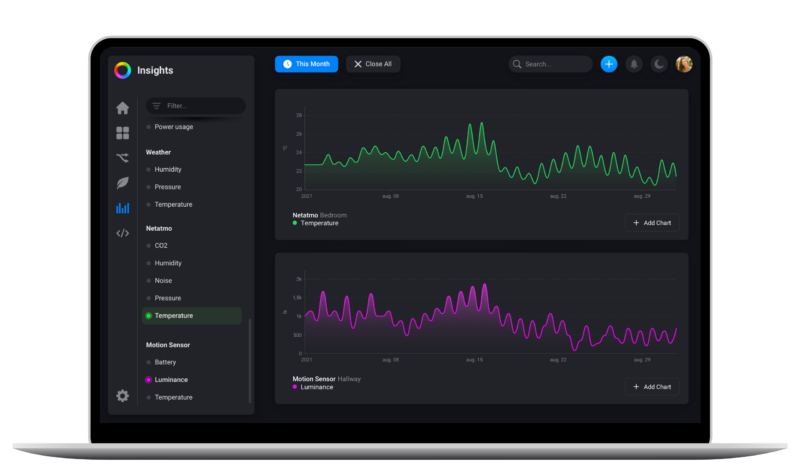主要解释程序代码,具体解析在代码中进行标注
锚框,具体看见网址https://zh-v2.d2l.ai/chapter_computer-vision/anchor.html#iou
对应程序解析:https://fkjkkll.github.io/2021/11/23/%E7%9B%AE%E6%A0%87%E6%A3%80%E6%B5%8BSSD/#more
目录
返回的锚框变量 Y 的形状
访问以 (250, 250) 为中心的第一个锚框
显示以图像中一个像素为中心的所有锚框
交并比(IoU)
将真实边界框分配给锚框
标记锚框的类和偏移量
在图像中绘制这些地面真相边界框和锚框
根据狗和猫的真实边界框,标注这些锚框的分类和偏移量
应用逆偏移变换来返回预测的边界框坐标
以下 nms 函数按降序对置信度进行排序并返回其索引
将非极大值抑制应用于预测边界框
将上述算法应用到一个带有四个锚框的具体示例中
在图像上绘制这些预测边界框和置信度
返回结果的形状是(批量大小,锚框的数量,6)
输出由非极大值抑制保存的最终预测边界框
%matplotlib inline
import torch
from d2l import torch as d2l
torch.set_printoptions(2) # 输出数值保存小数点后两位
'''
torch.set_printoptions 还有许多其他可用选项,下面是一些常见的参数:
precision: 设置小数点后的位数。
threshold: 总共显示的元素数量阈值。如果元素数量超过这个阈值,将使用省略号表示部分内容。
edgeitems: 当张量元素数量超过 threshold 时,显示张量两端的元素数量。
linewidth: 每行显示的字符数。
sci_mode: 是否使用科学记数法显示数字。
'''


# 函数参数:输入图像、尺寸列表和宽高比列表
def multibox_prior(data, sizes, ratios):
'''
s 指的是长宽的缩放比例而非面积的缩放比例,比如 s=0.5,则面积就是原图像的 0.5^2=0.25 倍。
r 是宽高比,指的是将原图像归一化为正方形后截取的锚框的宽高比;
或者说是在原图像的宽高比基础上乘以 r,才是锚框的宽高比。
'''
'''生成以每个像素为中心具有不同形状的锚框'''
in_height, in_width = data.shape[-2:]
device, num_sizes, num_ratios = data.device, len(sizes), len(ratios)
boxes_per_pixel = (num_sizes + num_ratios - 1)
size_tensor = torch.tensor(sizes, device=device)
ratio_tensor = torch.tensor(ratios, device=device)
# 为空将锚点移动到像素中心,需要设置偏移量
# 因为一个像素的高为1且宽为1, 我们选择偏移我们的中心0.5
offset_h, offset_w = 0.5, 0.5
steps_h = 1.0 / in_height # 在y轴缩放步长
steps_w = 1.0 / in_width # 在x轴缩放步长
# 生成锚框的所有中心点
center_h = (torch.arange(in_height, device=device) + offset_h) * steps_h
center_w = (torch.arange(in_width, device=device) + offset_w) * steps_w
shift_y, shift_x = torch.meshgrid(center_h, center_w, indexing='ij')
shift_y, shift_x = shift_y.reshape(-1), shift_x.reshape(-1)
# 生成“boxes_per_pixel”个高和宽,
# 之后用于创建锚框的四角坐标(xmin,xmax,ymin,ymax)
w = torch.cat((size_tensor * torch.sqrt(ratio_tensor[0]),
sizes[0] * torch.sqrt(ratio_tensor[1:]))) * in_height / in_width
h = torch.cat((size_tensor / torch.sqrt(ratio_tensor[0]),
sizes[0] / torch.sqrt(ratio_tensor[1:])))
# 除以2来获得半高和半宽, 生成了每个锚框相对于中心点的偏移量,并将这些偏移量应用于图像的每个像素位置
anchor_manipulations = torch.stack((-w, -h, w, h)).T.repeat(in_height * in_width, 1) / 2
'''
0维上复制in_height * in_width次, 1维上复制1次, 即保持原样
torch.stack((-w, -h, w, h)) 的输出形状为 (4, num_anchors)。
转置操作 .T 将张量的形状变为 (num_anchors, 4),其中每一行代表一个锚框的四个坐标偏移量 (xmin, ymin, xmax, ymax)。
.repeat(in_height * in_width, 1) 将每个锚框的偏移量重复 in_height * in_width 次。
in_height * in_width 是图像中的像素总数,因此这一步骤的作用是为图像中的每个像素生成所有锚框的偏移量。
重复后的张量形状为 (in_height * in_width * num_anchors, 4),其中每 num_anchors 行对应图像的一个像素位置。
'''
# 每个中心点都将有“boxes_per_pixel”个锚框,
# 所以生成含所有锚框中心的网格,重复了“boxes_per_pixel”次
out_grid = torch.stack([shift_x, shift_y, shift_x, shift_y],
dim=1).repeat_interleave(boxes_per_pixel, dim=0)
'''
repeat_interleave(repeats, dim=None)
repeates: 重复次数
dim: 在某个维度上重复
repeat与repeat_interleave的区别:
repeat_interleave(): 在原有的tensor上, 按每一个tensor复制。
repeat(): 根据原有的tensor复制n个, 然后拼接在一起
'''
output = out_grid + anchor_manipulations
# 对于每个像素增加其对应的偏移量,获得每个像素点对应的所有锚框的位置
return output.unsqueeze(0)返回的锚框变量 Y 的形状
img = d2l.plt.imread('../image/catdog.jpg')
h, w = img.shape[:2]
print(h, w)
x = torch.rand(size=(1, 3, h, w))
y = multibox_prior(x, sizes=[0.75, 0.5, 0.25], ratios=[1, 2, 0.5])
y.shape # 批量大小,锚框的数量,4
# 561 728
# torch.Size([1, 2042040, 4])访问以 (250, 250) 为中心的第一个锚框
boxes = y.reshape(h, w, 5, 4)
boxes[250, 250, 0, :]
# tensor([0.06, 0.07, 0.63, 0.82])显示以图像中一个像素为中心的所有锚框
def show_bboxes(axes, bboxes, labels=None, colors=None):
'''显示所有边界框'''
def _make_list(obj, default_value=None): # 保证对应的变量都为数组或元组
if obj is None:
obj = default_value
elif not isinstance(obj, (tuple, list)):
obj = [obj]
return obj
labels = _make_list(labels)
colors = _make_list(colors, ['b', 'g', 'r', 'm', 'c'])
for i, bbox in enumerate(bboxes):
color = colors[i % len(colors)] # 循环使用不同颜色
rect = d2l.bbox_to_rect(bbox.detach().numpy(), color) # 画出对应的框
axes.add_patch(rect)
if labels and len(labels) > i:
text_color = 'k' if color == 'w' else 'w'
axes.text(rect.xy[0], rect.xy[1], labels[i],
va='center', ha='center', fontsize=9, color=text_color,
bbox=dict(facecolor=color, lw=0))
d2l.set_figsize()
bbox_scale = torch.tensor((w, h, w, h))
fig = d2l.plt.imshow(img)
show_bboxes(fig.axes, boxes[250, 250, :, :] * bbox_scale,
['s=0.75, r=1', 's=0.5, r=1', 's=0.25, r=1', 's=0.75, r=2',
's=0.75, r=0.5'])
交并比(IoU)
def box_iou(boxes1, boxes2):
'''计算两个锚框或边界框列表中成对的交并比'''
box_area = lambda boxes: ((boxes[:, 2] - boxes[:, 0]) * (boxes[:, 3] - boxes[:, 1]))
# boxes1,boxes2,areas1,areas2的形状:
# boxes1:(boxes1的数量,4),
# boxes2:(boxes2的数量,4),
# areas1:(boxes1的数量,),
# areas2:(boxes2的数量,)
areas1 = box_area(boxes1)
areas2 = box_area(boxes2)
# inter_upperlefts,inter_lowerrights,inters的形状:
# (boxes1的数量,boxes2的数量,2)
# print('boxes1 shape:', boxes1.shape) # (5, 4)
# print('boxes2 shape:', boxes2.shape) # (2, 4)
inter_upperlefts = torch.max(boxes1[:, None, :2], boxes2[:, :2])
inter_lowerrights = torch.min(boxes1[:, None, 2:], boxes2[:, 2:])
'''
这里利用到了广播机制,广播机制从右往左逐维度遍历,维度小则增加成相同的,若没有维度则隐式视为1
以上面为实例: boxes1、boxes2 (数量, 4)
boxes1[:, None, :2]: 我们认为shape为: (3, 1, 2)
boxes2[:, :2] : 我们认为shape为: (2, 2)
从右往左:
2 == 2: 不变
1 < 2 : boxes1中对应的广播为2维
3 > 1 : boxes2中对应的广播为3维
最终维度: boxes1/boxes2:(3, 2, 2)
注意: (torch.max有时返回一个向量,有时返回两个向量, 原因如下)
按元素比较两个张量并返回最大值:返回一个张量,它是输入张量的对应位置的最大值。
沿某个维度找到最大值和其索引:返回两个张量,一个是最大值,另一个是最大值的索引。
'''
inters = (inter_lowerrights - inter_upperlefts).clamp(min=0)
# print('inter_upperlefts shape', inter_upperlefts.shape) # (5,2,2)
# print('inter_lowerrights shape', inter_lowerrights.shape) # (5,2,2)
# print('inters shape:', inters.shape) # (5,2,2)
# inter_areasandunion_areas的形状:(boxes1的数量,boxes2的数量)
inter_areas = inters[:, :, 0] * inters[:, :, 1]
union_areas = areas1[:, None] + areas2 - inter_areas
return inter_areas / union_areas将真实边界框分配给锚框
def assign_anchor_to_bbox(ground_truth, anchors, device, iou_threshold=0.5):
'''将最接近的真实边界框分配给锚框'''
num_anchors, num_gt_boxes = anchors.shape[0], ground_truth.shape[0]
# 位于第i行和第j列的元素x_ij是锚框i和真实边界框j的iou
jaccard = box_iou(anchors, ground_truth)
# print('jaccard shape:', jaccard.shape) # (5. 2)
# 对于每个锚框,分配的真实边界框的张量
anchors_bbox_map = torch.full((num_anchors, ), -1, dtype=torch.long, device=device)
# full第一个参数如果是一维的,需要在后面增加逗号,否者会报错
# print('anchor_bbox_map shape:', anchors_bbox_map.shape) # (5, )
# 根据阈值,决定是否分配真实边界框
max_ious, indices = torch.max(jaccard, dim=1)
# print('max_iou shape:', max_ious.shape) # (5, )
# print('indices shape:', indices.shape) # (5, )
'''
在1维上进行比较, 返回最大值以及对应的索引
这里计算每一行中的最大值,即每个锚框最有可能是哪一个边界框
'''
anc_i = torch.nonzero(max_ious >= iou_threshold).reshape(-1)
'''
torch.nonzero()函数:
1、输入是一维张量,返回一个包含输入 input 中非零元素索引的张量,输出张量中的每行包含 input 中非零元素的索引,
输出是二维张量torch.size(z,1), z 是输入张量 input 中所有非零元素的个数。
2、输入是n维张量,如果输入 input 有 n 维,则输出的索引张量的size为torch.size(z,n) , 这里 z 是输入张量 input 中所有非零元素的个数。
'''
box_j = indices[max_ious >= iou_threshold]
anchors_bbox_map[anc_i] = box_j # 将满足条件的位置赋为下标值,其余仍为-1
col_discard = torch.full((num_anchors, ), -1)
row_discard = torch.full((num_gt_boxes, ), -1)
print(anchors_bbox_map)
for _ in range(num_gt_boxes):
max_idx = torch.argmax(jaccard)
box_idx = (max_idx % num_gt_boxes).long()
anc_idx = (max_idx / num_gt_boxes).long()
anchors_bbox_map[anc_idx] = box_idx
jaccard[:, box_idx] = col_discard
jaccard[anc_idx, :] = row_discard
print(anchors_bbox_map)
return anchors_bbox_map # 只是将满足条件的分配给了对应的真实框,下标对应是哪一个锚框,值对应哪一个真实框
def offset_boxes(anchors, assigned_bb, eps=1e-6):
'''对锚框偏移量的转换'''
c_anc = d2l.box_corner_to_center(anchors)
c_assigned_bb = d2l.box_corner_to_center(assigned_bb)
offset_xy = 10 * (c_assigned_bb[:, :2] - c_anc[:, :2])/ c_anc[:, 2:]
offset_wh = 5 * torch.log(eps + c_assigned_bb[:, 2:] / c_anc[:, 2:])
offset = torch.cat([offset_xy, offset_wh], dim=1)
return offset标记锚框的类和偏移量
def multibox_target(anchors, labels):
'''使用真实边界框标记锚框'''
batch_size, anchors = labels.shape[0], anchors.squeeze(0) # 删除一个维度, 即删除批次维度
batch_offset, batch_mask, batch_class_labels = [], [], []
device, num_anchors = anchors.device, anchors.shape[0]
# print('anchors shape:', anchors.shape)
for i in range(batch_size):
label = labels[i, :, :]
anchors_bbox_map = assign_anchor_to_bbox(label[:, 1:], anchors, device)
# print('anchor_bbpx_map shape:', anchors_bbox_map.shape)
# print('anchors_bbox_map:', anchors_bbox_map)
bbox_mask = ((anchors_bbox_map >= 0).float().unsqueeze(-1)).repeat(1, 4)
# print('bbox_mask shape:', bbox_mask.shape) # (5, 4)
'''
形成一个矩阵,矩阵大小为:【锚框数量, 4】, 值为true 或者 false
'''
# 将类标签和分配的边界框坐标初始化为零
class_labels = torch.zeros(num_anchors, dtype=torch.long, device=device)
assigned_bb = torch.zeros((num_anchors, 4), dtype=torch.float32, device=device)
# 使用真实边界框来标记锚框的类别。
# 如果一个锚框没有被分配,标记其为背景(值为零)
indices_true = torch.nonzero(anchors_bbox_map >= 0)
# print('indices_true shaoe', indices_true.shape) # (3, 1)
bb_idx = anchors_bbox_map[indices_true]
# print(bb_idx)
# print('bb_idx shape:', bb_idx.shape) # (3, 1)
# print('label shape:', label.shape) # (2, 5)
# print(label)
class_labels[indices_true] = label[bb_idx, 0].long() + 1
# print(class_labels)
assigned_bb[indices_true] = label[bb_idx, 1:]
# 偏移量转换
offset = offset_boxes(anchors, assigned_bb) * bbox_mask
batch_offset.append(offset.reshape(-1))
batch_mask.append(bbox_mask.reshape(-1))
batch_class_labels.append(class_labels)
bbox_offset = torch.stack(batch_offset)
bbox_mask = torch.stack(batch_mask)
class_labels = torch.stack(batch_class_labels)
'''
torch.cat() 和 torch.stack()的区别:
torch.cat(concatenate)用于沿着指定维度连接给定的张量序列。被连接的张量必须在除连接维度以外的所有维度上具有相同的大小。
torch.stack 用于沿着一个新的维度连接给定的张量序列。被堆叠的张量必须具有相同的形状。
'''
return (bbox_offset, bbox_mask, class_labels)在图像中绘制这些地面真相边界框和锚框
ground_truth = torch.tensor([[0, 0.1, 0.08, 0.52, 0.92],
[1, 0.55, 0.2, 0.9, 0.88]])
anchors = torch.tensor([[0, 0.1, 0.2, 0.3], [0.15, 0.2, 0.4, 0.4],
[0.63, 0.05, 0.88, 0.98], [0.66, 0.45, 0.8, 0.8],
[0.57, 0.3, 0.92, 0.9]])
fig = d2l.plt.imshow(img)
show_bboxes(fig.axes, ground_truth[:, 1:] * bbox_scale, ['dog', 'cat'], 'k')
show_bboxes(fig.axes, anchors * bbox_scale, ['0', '1', '2', '3', '4'])
根据狗和猫的真实边界框,标注这些锚框的分类和偏移量
labels = multibox_target(anchors.unsqueeze(dim=0),
ground_truth.unsqueeze(dim=0))
labels[2]
# tensor([[0, 1, 2, 0, 2]])
labels[1]
# tensor([[0., 0., 0., 0., 1., 1., 1., 1., 1., 1., 1., 1., 0., 0., 0., 0., 1., 1.,
# 1., 1.]])
labels[0]
# tensor([[-0.00e+00, -0.00e+00, -0.00e+00, -0.00e+00, 1.40e+00, 1.00e+01,
# 2.59e+00, 7.18e+00, -1.20e+00, 2.69e-01, 1.68e+00, -1.57e+00,
# -0.00e+00, -0.00e+00, -0.00e+00, -0.00e+00, -5.71e-01, -1.00e+00,
# 4.17e-06, 6.26e-01]])应用逆偏移变换来返回预测的边界框坐标
def offset_inverse(anchors, offset_preds):
'''根据带有预测偏移量的锚框来预测边界框'''
anc = d2l.box_corner_to_center(anchors)
pred_bbox_xy = (offset_preds[:, :2] * anc[:, 2:] / 10) + anc[:, :2]
pred_bbox_wh = torch.exp(offset_preds[:, 2:] / 5) * anc[:, 2:]
pred_bbox = torch.cat((pred_bbox_xy, pred_bbox_wh), dim=1)
predicted_bbox = d2l.box_center_to_corner(pred_bbox)
return predicted_bbox以下 nms 函数按降序对置信度进行排序并返回其索引

def nms(boxes, scores, iou_threshold):
'''对预测边界框的置信度进行排序'''
B = torch.argsort(scores, dim=-1, descending=True)
'''
torch.argsort():
input: 需要排序的张量。
dim: 要排序的维度。默认是最后一个维度 (-1)。
descending: 是否按降序排序。默认为 False, 即升序排序。
'''
keep = []
while B.numel() > 0:
i = B[0]
keep.append(i)
if B.numel() == 1: break
iou = box_iou(boxes[i, :].reshape(-1, 4),
boxes[B[1:], :].reshape(-1, 4)).reshape(-1)
inds = torch.nonzero(iou <= iou_threshold).reshape(-1)
B = B[inds + 1] # inds是在B[1:]的基础上计算出来的下标,若要应用于原始的下标,需要加1
return torch.tensor(keep, device=boxes.device)将非极大值抑制应用于预测边界框
def multibox_detection(cls_probs, offset_preds, anchors, nms_threshold=0.5,
pos_threshold=0.009999999):
'''
使用非极大值抑制来预测边界框
clas_probs shape:(批次大小, 类别数目, 锚框数目) 数据信息为各个锚框对各个类别预测的置信度
offset_preds shape:(批次大小, 锚框数目, 4) 代表每个锚框预测的偏移量
anchors shape: (批次大小, 锚框数目, 4) 代表每个锚框的初始坐标
'''
device, batch_size = cls_probs.device, cls_probs.shape[0]
anchors = anchors.squeeze(0) # 减少一个维度 (锚框的数量, 4)
num_classes, num_anchors = cls_probs.shape[1], cls_probs.shape[2]
out = []
for i in range(batch_size):
cls_prob, offset_pred = cls_probs[i], offset_preds[i].reshape(-1, 4)
# print('cls_prob:', cls_prob)
conf, class_id = torch.max(cls_prob[1:], 0) # 计算置信度得分
# print('conf:', conf)
# print('class_id:', class_id)
'''
cls_prob: tensor([[0.00, 0.00, 0.00, 0.00],
[0.90, 0.80, 0.70, 0.10],
[0.10, 0.20, 0.30, 0.90]])
conf: tensor([0.90, 0.80, 0.70, 0.90])
class_id: tensor([0, 0, 0, 1])
'''
predicted_bb = offset_inverse(anchors, offset_pred) # 通过预测的偏移量获得预测的框
keep = nms(predicted_bb, conf, nms_threshold) # 通过非极大抑制去除一些框
# 找到所有的non_keep索引,并将类设置为背景
all_idx = torch.arange(num_anchors, dtype=torch.long, device=device)
combined = torch.cat((keep, all_idx))
uniques, counts = combined.unique(return_counts=True)
non_keep = uniques[counts == 1]
all_id_sorted = torch.cat((keep, non_keep))
class_id[non_keep] = -1
# print(class_id)
class_id = class_id[all_id_sorted]
# print(class_id)
'''
tensor([ 0, -1, -1, 1])
tensor([ 0, 1, -1, -1])
'''
conf, predicted_bb = conf[all_id_sorted], predicted_bb[all_id_sorted]
# pos_threshold是一个用于非背景预测的阈值
below_min_idx = (conf < pos_threshold)
class_id[below_min_idx] = -1
conf[below_min_idx] = 1 - conf[below_min_idx]
pred_info = torch.cat(
(class_id.unsqueeze(1), conf.unsqueeze(1), predicted_bb), dim=1)
out.append(pred_info)
return torch.stack(out) # (批量大小,锚框的数量,6)
'''
第一个元素是预测的类索引,从0开始(0代表狗,1代表猫),值-1表示背景或在非极大值抑制中被移除了。
第二个元素是预测的边界框的置信度。
其余四个元素分别是预测边界框左上角和右下角的x/y轴坐标(范围介于0和1之间)
'''将上述算法应用到一个带有四个锚框的具体示例中
anchors = torch.tensor([[0.1, 0.08, 0.52, 0.92], [0.08, 0.2, 0.56, 0.95],
[0.15, 0.3, 0.62, 0.91], [0.55, 0.2, 0.9, 0.88]])
offset_preds = torch.tensor([0] * anchors.numel())
cls_probs = torch.tensor([[0] * 4, # 背景的预测概率
[0.9, 0.8, 0.7, 0.1], # 狗的预测概率
[0.1, 0.2, 0.3, 0.9]]) # 猫的预测概率在图像上绘制这些预测边界框和置信度
fig = d2l.plt.imshow(img)
show_bboxes(fig.axes, anchors * bbox_scale,
['dog=0.9', 'dog=0.8', 'dog=0.7', 'cat=0.9'])
返回结果的形状是(批量大小,锚框的数量,6)
output = multibox_detection(cls_probs.unsqueeze(dim=0),
offset_preds.unsqueeze(dim=0),
anchors.unsqueeze(dim=0), nms_threshold=0.5)
'''
第一个元素是预测的类索引,从0开始(0代表狗,1代表猫),值-1表示背景或在非极大值抑制中被移除了。
第二个元素是预测的边界框的置信度。
其余四个元素分别是预测边界框左上角和右下角的x/y轴坐标(范围介于0和1之间)
'''
output
# tensor([[[ 0.00, 0.90, 0.10, 0.08, 0.52, 0.92],
# [ 1.00, 0.90, 0.55, 0.20, 0.90, 0.88],
# [-1.00, 0.80, 0.08, 0.20, 0.56, 0.95],
# [-1.00, 0.70, 0.15, 0.30, 0.62, 0.91]]])输出由非极大值抑制保存的最终预测边界框
fig = d2l.plt.imshow(img)
for i in output[0].detach().numpy():
if i[0] == -1:
continue
label = ('dog=', 'cat=')[int(i[0])] + str(i[1])
show_bboxes(fig.axes, [torch.tensor(i[2:]) * bbox_scale], label)



















